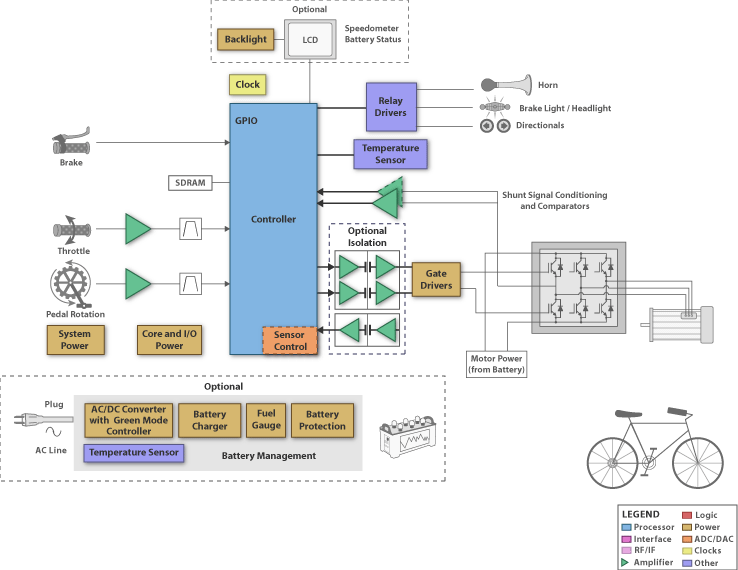
Design Considerations
Electric bikes are becoming an increasingly intriguing option for commuters who live relatively close to work or for those looking for an alternative to the more expensive motorized options. As battery and motor technology forges ahead, the speed and range of E-bikes are surging with it. The E-bike can use a variety of components based on the desired cost and complexity of the design.
The core subsystems include:
Controller:
Typically includes detection, A/D conversion, and output comparison components. For a low-end system, the ultra-low power microcontroller is available while the C2000 digital signal processor can be used for a complex system with more features.
Electric motor:
Typically either brush or brushless DC motors are used for the E-bike. The brushless, although more reliable and efficient, can increase the bike weight.
Battery:
A variety of battery types are used from lead-acid to lithium. The lead-acid battery is commonly used for its low-cost but is much larger and heavier as well as less “green” than the lithium battery.
Power management:
Provides power to run functional blocks and oversees battery activity. For a low-end E-bike, the host controller with comparators and discretes can be used to manage a lead-acid battery. More complex E-bikes utilize specific ICs which offer cell protection, monitoring and fuel gauging to provide safety and critical information about the lithium battery to the user.
Click here for additional information
Download Full Block Diagram Below
Advertisement

Learn more about Texas Instruments





